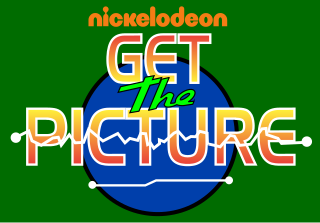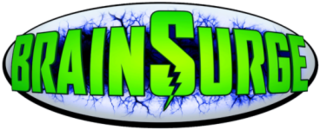Related Research Articles

Tic-tac-toe, noughts and crosses, or Xs and Os is a paper-and-pencil game for two players who take turns marking the spaces in a three-by-three grid with X or O. The player who succeeds in placing three of their marks in a horizontal, vertical, or diagonal row is the winner. It is a solved game, with a forced draw assuming best play from both players.

Trivial Pursuit is a board game in which winning is determined by a player's ability to answer general knowledge and popular culture questions. Players move their pieces around a board, the squares they land on determining the subject of a question they are asked from a card. Each correct answer allows the player's turn to continue; a correct answer on one of the six "category headquarters" spaces earns a plastic wedge which is slotted into the answerer's playing piece. The object of the game is to collect all six wedges from each "category headquarters" space, and then return to the center "hub" space to answer a question in a category selected by the other players.

TwixT is a two-player strategy board game, an early entrant in the 1960s 3M bookshelf game series. It became one of the most popular and enduring games in the series. It is a connection game where players alternate turns placing pegs and links on a pegboard in an attempt to link their opposite sides. While TwixT itself is simple, the game also requires strategy, so young children can play it, but it also appeals to adults. The game has been discontinued except in Germany and Japan.
Scene It? is an interactive film series created by Screenlife Games, in which players answer trivia questions about films or pop culture. The games were first developed to be played with questions read from trivia cards or viewed on a television from an included DVD or based on clips from movies, TV shows, music videos, sports and other popular culture phenomena. Scene It? was made available as a mobile game for iPhone, iPad, on Xbox 360, PlayStation 3 and Wii as well as two social network games on Facebook. The series was discontinued in 2012, after Paramount Pictures, who owned Screenlife Games after 2008, closed the studio. The series was revived in 2022 by Imagination Games, with streaming functionality replacing DVDs.

Get the Picture is an American children's game show that aired from March 18 to December 6, 1991, on Nickelodeon. Hosted by Mike O'Malley, the show features two teams answering questions and playing games for the opportunity to guess a hidden picture on a giant screen made up of 16 smaller screens. The show was taped at Nickelodeon Studios at Universal Studios in Orlando, Florida. The program's theme music and game music was composed by Dan Vitco and Mark Schultz, and produced by Schultz. Its tagline is The Great Frame Game.

Continuo is an abstract strategy game by Maureen Hiron which was first published in 1982 and now distributed in board game form by David Westnedge Ltd. In the U.K and U.S. Games Systems in the U.S. It is played by arranging patterns printed on a deck of 42 cards, each card being printed with a grid of 16 colored squares. The goal is to place cards so that the tiles match as many chains of color as possible. Continuo sold over 200,000 units in the United Kingdom alone within a few months of being launched. Continuo won a 1995 Mensa Select games award. The tag line on the box is "The one rule game for all the family".

Mental Floss is an online magazine and its related American digital, print, and e-commerce media company focused on millennials. It is owned by Minute Media and based in New York City, United States. mentalfloss.com, which presents facts, puzzles, and trivia with a humorous tone, draws 20.5 million unique users a month. Its YouTube channel produces three weekly series and has 1.3 million subscribers. In October 2015, Mental Floss teamed with the National Geographic Channel for its first televised special, Brain Surgery Live with mental_floss, the first brain surgery ever broadcast live.

Brain Age: Train Your Brain in Minutes a Day!, known as Dr. Kawashima's Brain Training: How Old Is Your Brain? in PAL regions, is an edutainment puzzle video game. It was developed and published by Nintendo for the Nintendo DS. Nintendo has stated that it is an entertainment product inspired by Tohoku University professor Ryuta Kawashima's work in the neurosciences.
Time Machine is an American game show where contestants compete to answer trivia questions about popular culture and recent history to win prizes. The show aired on NBC from January 7 through April 26, 1985, and was hosted by John Davidson. Charlie Tuna was the announcer, with Rich Jeffries as his substitute. Reg Grundy Productions produced the series, and upon its premiere Time Machine was one of three Grundy series airing on NBC.
itbox is a networked gambling games terminal which is found in thousands of pubs, leisure centres and amusement arcades in the United Kingdom. Classified as a "skill with prize" (SWP) machine, each itbox terminal typically includes 25 different games. Each game costs 50p or £1 to play and lasts between 10 seconds and several minutes. From most of these games it is possible to win modest cash prizes. Although strictly the name 'itbox' refers only to Leisure Link-made terminals, the name is often casually applied as a genericized trademark to other SWP terminals such as Paragon SWP, Gamesnet, ind:e and Fatbox.

Hasami shogi is a variant of shogi. The game has two main variants, and all Hasami variants, unlike other shogi variants, use only one type of piece, and the winning objective is not checkmate. One main variant involves capturing all but one of the opponent's men; the other involves building an unbroken vertical or horizontal chain of five-in-a-row.
MindTrap is a series of lateral thinking puzzle games played by two individuals or teams. Invented in Canada, it is the main product of MindTrap Games, Inc., who license the game for manufacture by various companies including Outset Media, Blue Opal, the Great American Puzzle Factory, Pressman Toy Corporation, Spears Games and Winning Moves.

Gess is an abstract strategy board game for two players, involving a grid board and mutating pieces. The name was chosen as a conflation of "chess" and "Go". It is pronounced with a hard "g" as in "Go", and is thus homophonous with "guess".
Brain Battle was a Canadian interactive game show, which aired weekdays on Global. The show premiered on March 26, 2007 and aired a total of 356 episodes as of its series finale on August 4, 2008.

BrainSurge is an American children's game show that aired on Nickelodeon and was hosted by Jeff Sutphen. The show taped its first season in February 2009, and debuted on September 28, 2009. The show's format was adapted from the Japanese game show Brain Survivor. The U.S. version was created by Scott A. Stone, co-creator of Legends of the Hidden Temple, and Clay Newbill, executive producer of The Mole.

Disney Think Fast is a Disney-themed trivia game show-based game developed by Magenta Software and published by Disney Interactive Studios. The game was released for the Wii in North America on October 21, 2008, and for Europe and Japan in December. The game was also released for PlayStation 2 in North America on November 7, November 14 in Europe, and in Australia on December 5.
Nubian Jak is a multi-award-winning board game, introduced in 1994, that combines questions on historical facts with pop trivia, to highlight some of the achievements by people of colour globally.
Family Game Night was an American television game show based on Hasbro's family of board games and EA's video game franchise of the same name. The show was hosted by Todd Newton. Burton Richardson announced for the first two seasons, until he was replaced by Stacey J. Aswad for the third season, and then Andrew Kishino beginning in the fourth season. The 60-minute program debuted on October 10, 2010, on The Hub, formerly Discovery Kids. The network would become Discovery Family on October 13, 2014; it was previewed on October 9, 2010, on its sister channel, TLC. Seasons 1 and 2 each contained 26(1) and 30(2) episodes. Seasons 3, 4 and 5 each contained 15 episodes. Season two premiered on Friday, September 2, 2011, and additional games were added. The games added to the second season included Cranium Brain Breaks, Green Scream, Ratuki Go-Round, Simon Flash, Operation Sam Dunk, Trouble Pop Quiz, and Spelling Bee. However, games from the previous season were still kept.
Mojo is a two-player, 3 in-a-row abstract strategy board game played with original and unique "thrice-sliced-dice". The pieces, handmade to order in India, are colored with non-toxic vegetable dye. The individual opposite ends of the pieces are marked with pips and numbered similar to regular dice - i.e. they total 7. It takes all 3 pieces of a color to make up a single die.
Jeopardy! is an American quiz game show in which contestants use certain strategies and skills to increase their chances of winning each game, win the most games, and ensure large winnings.
References
- ↑ "BoardGameGeek, Review of Brain Chain, October 2, 2006". Archived from the original on January 2, 2007. Retrieved December 15, 2006.
- ↑ The Winter Olympics are over but the Competition Continues with Brain Chain, the Awesome Strategy-Meets-Trivia Board Game, March 2006, located at http://www.24-7pressrelease.com/pdf/2006/03/07/press_release_11758.pdf Archived 2007-09-27 at the Wayback Machine
- ↑ Pacific Union College, Website article, November 2006, Award-Winning Gamemakers Credit Success to PUC Education, located at "Pacific Union College". Archived from the original on 2007-02-23. Retrieved 2006-12-17.
- ↑ Loma Linda Academy Mirror, Volume 72 Number 4, January/February 2005, Briefs: Brain Chain, located at http://www.lla.org/pdf/mirror/jan_feb_05.pdf Archived October 9, 2006, at the Wayback Machine
- 1 2 Ibid.
- ↑ The Southwesterner Online, December 2006, SWAU Alumna Edits Top 100 Board Game, located at "The Southwesterner Online - SWAU alumna edits top 100 board game". Archived from the original on 2007-09-27. Retrieved 2007-01-06.
- ↑ The Luding Database, Game Database Entry, Brain Chain, November 2006, located at http://sunsite.informatik.rwth-aachen.de/cgi-bin/luding/GameName.py?lang=e&gamename=Brain+Chain Archived 2008-01-25 at the Wayback Machine
- ↑ GAMES Magazine, December 2006 Issue, The 2007's Buyer's Guide to Games/Top 100 Traditional Games List, at page 46
- ↑ Curio City Online, January 2007, Brain Chain Trivia Strategy Game, located at http://www.curiocityonline.com/index.php/action/item/id/443/prevaction/category/previd/4/prevstart/0/ Archived 2007-10-09 at the Wayback Machine
- ↑ Funagain Games, Review by Larry Allen, posted on October 18, 2006, located online at http://www.funagain.com/control/product/~product_id=016565 Archived 2006-10-17 at the Wayback Machine
- ↑ Brain Chain Official Rules